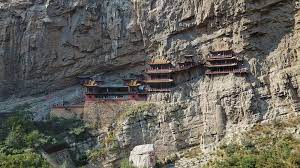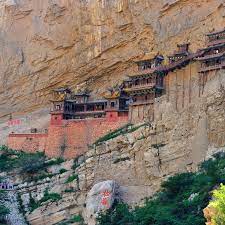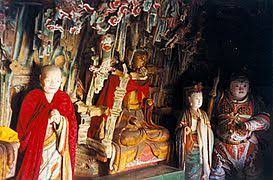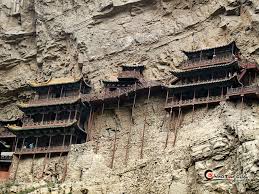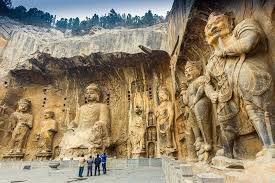
Hanging Temple
Delhi
Hanging Temple Itinerary
Day 1: Arrival in Datong Morning:
Arrive in Datong, the nearest city to the Hanging Temple, and check into your accommodation. Datong offers a range of options, from budget hotels to luxury resorts. Afternoon: Visit the Yungang Grottoes, a UNESCO World Heritage Site and one of China's most famous Buddhist cave temple complexes. Explore the intricately carved statues and rock-cut architecture, learning about their history and significance. Evening: Enjoy dinner at a local restaurant in Datong, sampling Shanxi cuisine specialties such as knife-cut noodles, braised pork belly, and vinegar-pickled vegetables.
Day 2: Hanging Temple Exploration Morning:
Depart from Datong and travel to the Hanging Temple, located approximately 65 kilometers southeast of the city. Upon arrival, purchase your entrance tickets and take a shuttle bus to the site. Afternoon: Explore the Hanging Temple and its surroundings. Marvel at the remarkable feat of engineering that allows the temple to cling to the cliffside, some 50 meters above the ground. Visit the various halls and pavilions, admiring the intricate wood carvings, statues, and religious artifacts. Evening: Return to Datong in the evening and relax at your accommodation. Enjoy dinner at a local restaurant, reflecting on your day spent exploring the Hanging Temple.
Day 3: Datong City Tour Morning:
Take a guided tour of Datong's city center, visiting attractions such as the Nine Dragon Screen, the Huayan Temple, and the Drum Tower. Learn about Datong's history as a former capital of the Northern Wei Dynasty and its importance as a cultural and religious center. Afternoon: Visit the Datong City Wall, one of the largest and best-preserved ancient city walls in China. Walk or cycle along the wall, enjoying panoramic views of the city and surrounding countryside. Evening: Explore Datong's bustling night market, sampling street food delicacies and shopping for souvenirs such as handicrafts, textiles, and local specialties.
Day 4: Departure Morning:
Visit the Datong Museum to learn more about the history and culture of the region. Explore exhibitions on Datong's archaeological treasures, ancient artifacts, and cultural heritage. Afternoon: Transfer to Datong Railway Station or Datong Yungang Airport for your departure. Depending on your departure time, you may have time to visit additional attractions in Datong or relax at a local teahouse. Evening: Depart from Datong and continue your journey to your next destination, taking with you memories of your time spent exploring the Hanging Temple and the historic city of Datong.
Our Tour Details
-
Pick-up and DropDelhi
-
Duration3N/4D
-
Starting Price₹/-
Frequently asked Questions:
The Hanging Temple, or Xuankong Temple, is located near Mount Heng in Hunyuan County, Datong City, Shanxi Province, China.
The temple is called the Hanging Temple because it appears to "hang" on the side of a cliff. It is built into the rock face of a steep mountain, creating a gravity-defying architectural marvel.
The Hanging Temple is believed to have been built more than 1,500 years ago during the Northern Wei Dynasty (386–557 AD). It has undergone renovations and expansions throughout its history.
The Hanging Temple is a unique combination of various architectural styles, including Chinese, Indian, and Tibetan influences. It is an extraordinary example of ancient engineering and craftsmanship.
The temple is dedicated to Buddhism, Taoism, and Confucianism. It houses statues of Buddha, Taoist deities, and Confucian philosophers, showcasing a harmonious coexistence of different religious beliefs.
The temple is supported by a complex system of wooden beams, brackets, and crossbeams that are embedded into the rock. The ingenuity of the construction allows the temple to withstand the elements and seismic activity.
Yes, visitors are allowed to enter the Hanging Temple. The interior houses a collection of ancient sculptures, calligraphy, and religious artifacts. It provides a unique and awe-inspiring experience for tourists.
The temple has undergone structural reinforcements and renovations to ensure its safety for visitors. However, individuals with a fear of heights or certain health conditions may find the visit challenging.
The Hanging Temple is considered a symbol of religious harmony and architectural brilliance in Chinese culture. It reflects the adaptability and integration of diverse religious traditions.
Yes, photography is generally allowed inside the Hanging Temple. However, visitors should be respectful of the religious artifacts and sculptures, following any specific guidelines provided by the temple authorities.

